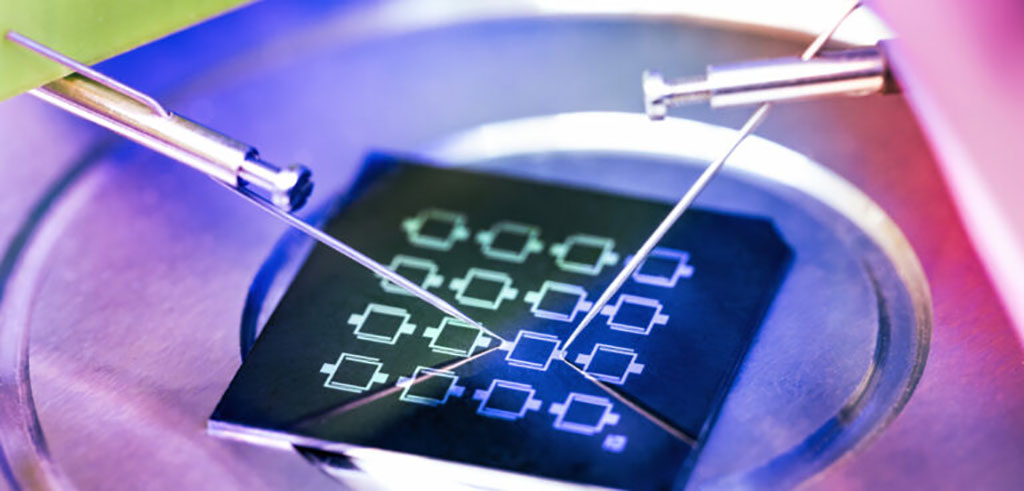Innovative Device Measures Glucose in Saliva for More Convenient Diabetes Monitoring
|
By HospiMedica International staff writers Posted on 30 Aug 2023 |

Diabetes arises when the body fails to regulate its blood glucose levels. Elevated glucose levels can lead to cardiovascular disease and other ailments, making it essential for individuals with diabetes to keep their blood glucose within moderate ranges. The conventional method for monitoring blood glucose in people with diabetes involves using devices that analyze a droplet of blood obtained through finger pricking multiple times daily. Recently, implanted sensors have enabled continuous glucose monitoring without the discomfort of pinpricks, but these devices might be less accurate for lower glucose levels and are not approved for children. A more convenient alternative could be salivary testing, as saliva correlates with blood glucose levels. However, glucose concentrations in saliva are much lower than in blood, posing challenges for accurate measurement without advanced laboratory equipment.
Researchers at King Abdullah University of Science and Technology (KAUST, Saudi Arabia) have now created a prototype sensor capable of measuring glucose levels in saliva. This innovation could eventually offer a simple, swift, and painless way for individuals to monitor their diabetes. The KAUST team devised a remarkably sensitive glucose detector built on a thin-film transistor. These compact, lightweight, and energy-efficient devices could be produced en masse as affordable disposable sensors. The transistor features thin layers of semiconductors, including indium oxide and zinc oxide, along with the enzyme glucose oxidase on top. When a saliva sample is applied to the sensor, the enzyme converts any glucose present into D-gluconolactone and hydrogen peroxide. The electrical oxidation of hydrogen peroxide generates electrons that enter the semiconductor layers, modifying the current flowing through the semiconductors. This change reflects the glucose concentration in the sample.
The researchers evaluated their device using human saliva samples with varying glucose levels and also analyzed saliva from fasting volunteers (since saliva glucose levels might not align with blood glucose levels immediately after eating). They discovered that the device accurately measured a broad range of glucose concentrations in under a minute. Importantly, the sensor remained unaffected by other molecules in saliva, including sugar derivatives like fructose and sucrose. Although the device's sensitivity decreased over time, it maintained good performance even after two weeks of storage at room temperature. The team is presently working on an array of transistor sensors that could simultaneously detect multiple metabolites in saliva.
“An easy-to-use noninvasive glucose-measuring device using saliva as a medium could be life-changing for millions of patients worldwide,” said research team member Abhinav Sharma.
“The development of portable sensor arrays that can be integrated with a smartphone is a potential future direction for research,” added Thomas Anthopoulos, who led the research team.
Related Links:
KAUST
Latest Point of Care News
Channels
Critical Care
view channel
Ingestible Smart Capsule for Chemical Sensing in the Gut Moves Closer to Market
Intestinal gases are associated with several health conditions, including colon cancer, irritable bowel syndrome, and inflammatory bowel disease, and they have the potential to serve as crucial biomarkers... Read moreNovel Cannula Delivery System Enables Targeted Delivery of Imaging Agents and Drugs
Multiphoton microscopy has become an invaluable tool in neuroscience, allowing researchers to observe brain activity in real time with high-resolution imaging. A crucial aspect of many multiphoton microscopy... Read more
Novel Intrabronchial Method Delivers Cell Therapies in Critically Ill Patients on External Lung Support
Until now, administering cell therapies to patients on extracorporeal membrane oxygenation (ECMO)—a life-support system typically used for severe lung failure—has been nearly impossible.... Read moreSurgical Techniques
view channel
Pioneering Sutureless Coronary Bypass Technology to Eliminate Open-Chest Procedures
In patients with coronary artery disease, certain blood vessels may be narrowed or blocked, requiring a stent or a bypass (also known as diversion) to restore blood flow to the heart. Bypass surgeries... Read more
Intravascular Imaging for Guiding Stent Implantation Ensures Safer Stenting Procedures
Patients diagnosed with coronary artery disease, which is caused by plaque accumulation within the arteries leading to chest pain, shortness of breath, and potential heart attacks, frequently undergo percutaneous... Read more
World's First AI Surgical Guidance Platform Allows Surgeons to Measure Success in Real-Time
Surgeons have always faced challenges in measuring their progress toward surgical goals during procedures. Traditionally, obtaining measurements required stepping out of the sterile environment to perform... Read morePatient Care
view channel
Portable Biosensor Platform to Reduce Hospital-Acquired Infections
Approximately 4 million patients in the European Union acquire healthcare-associated infections (HAIs) or nosocomial infections each year, with around 37,000 deaths directly resulting from these infections,... Read moreFirst-Of-Its-Kind Portable Germicidal Light Technology Disinfects High-Touch Clinical Surfaces in Seconds
Reducing healthcare-acquired infections (HAIs) remains a pressing issue within global healthcare systems. In the United States alone, 1.7 million patients contract HAIs annually, leading to approximately... Read more
Surgical Capacity Optimization Solution Helps Hospitals Boost OR Utilization
An innovative solution has the capability to transform surgical capacity utilization by targeting the root cause of surgical block time inefficiencies. Fujitsu Limited’s (Tokyo, Japan) Surgical Capacity... Read more
Game-Changing Innovation in Surgical Instrument Sterilization Significantly Improves OR Throughput
A groundbreaking innovation enables hospitals to significantly improve instrument processing time and throughput in operating rooms (ORs) and sterile processing departments. Turbett Surgical, Inc.... Read moreHealth IT
view channel
Printable Molecule-Selective Nanoparticles Enable Mass Production of Wearable Biosensors
The future of medicine is likely to focus on the personalization of healthcare—understanding exactly what an individual requires and delivering the appropriate combination of nutrients, metabolites, and... Read more
Smartwatches Could Detect Congestive Heart Failure
Diagnosing congestive heart failure (CHF) typically requires expensive and time-consuming imaging techniques like echocardiography, also known as cardiac ultrasound. Previously, detecting CHF by analyzing... Read moreBusiness
view channel
Expanded Collaboration to Transform OR Technology Through AI and Automation
The expansion of an existing collaboration between three leading companies aims to develop artificial intelligence (AI)-driven solutions for smart operating rooms with sophisticated monitoring and automation.... Read more

















